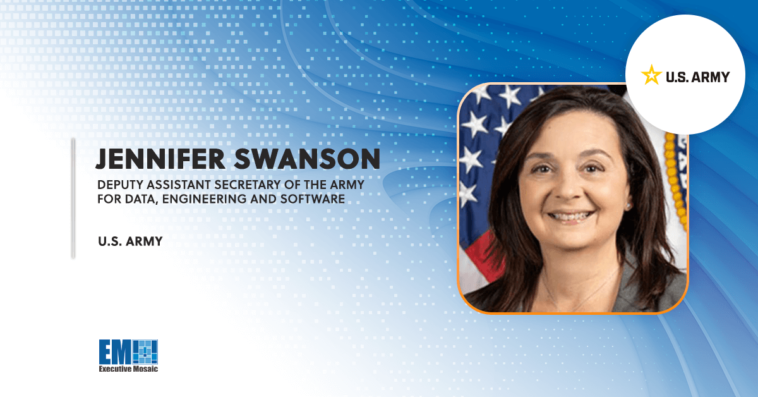Artificial intelligence and machine learning tools and technologies are most effective when they’re built on clean, organized and reliable data. That’s why the U.S. Army is focusing heavily on building a data mesh as its AI/ML projects and programs mature.

Learn more about the Army’s top goals and objectives at the in-person Army Acquisition Priorities: Balancing Readiness and Modernization Forum next week on Nov. 8. The Army’s Young Bang keynotes. Register here for your chance to meet and network with Army and industry leaders.
The service branch has developed a Unified Data Reference Architecture, known as UDRA, that Army leaders believe is the key to solving its most difficult data challenges. Jennifer Swanson, deputy assistant secretary of the Army for data, engineering and software, said this data mesh-based reference architecture is “critical” to the Army’s ability to implement digital engineering and digital models like digital twins.
“When you talk about digital twins, for example, we want to ensure that if we have a community within the Army that is developing a digital twin, that that digital twin can be reused by everybody easily, in a way where they’re able to do the things that they need to do with their data within a consistent data architecture across the Army,” she explained during her keynote address at the ExecutiveBiz Digital Twins Forum on Wednesday. “And that’s what the UDRA provides.”
According to Swanson, the UDRA is “very important to coordinate” because it will soon be required in program requests for proposals.
“We want to make sure that we are fully vetting that so that it is definitely something that is executable when it is required,” she said.
The Army issued its third and most recent request for information regarding the UDRA on Sep. 15. Swanson also noted that the Army has hosted two industry days on the topic as the service branch moves closer towards implementing UDRA on a larger scale.
“All of the issues that we have with data centricity today, we believe, are solved with this data mesh-based reference architecture. And so as we implement that, I think it gets after probably 90 percent of that problem,” Swanson shared. “If we don’t all get on the same data reference architecture and implement it accordingly, we’re not going to be able to really get after that problem because everybody’s still going to be treating data very differently and it’s not going to work.”
Meanwhile, the Army is moving forward with its flagship AI/ML program, Project Linchpin. The Army’s Program Executive Office Intelligence, Electronic Warfare and Sensors issued a request for information for an AI Bill of Materials for Project Linchpin on Oct. 30 and will be collecting industry input until Dec. 1.
Swanson said that through Project Linchpin, the Army is “developing a very open MLOps pipeline that is going to allow us to take in all kinds of different models, make sure that they are properly vetted, that we understand any risks that we are incurring by using the models, and then have those models be able to provide whatever information the model is providing.”





